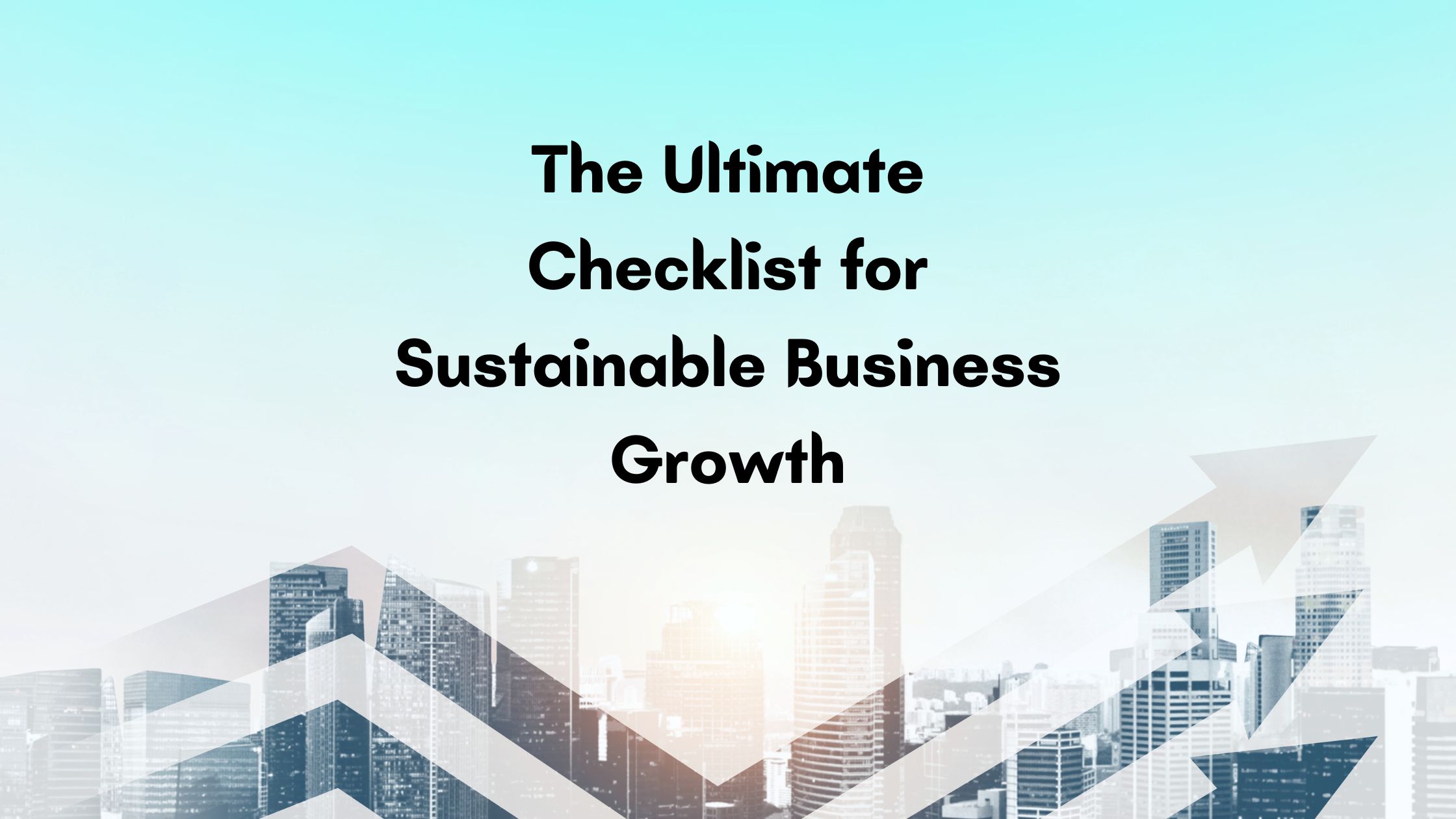The Ultimate Checklist for Sustainable Business Growth
 David Hamilton Tweedale
David Hamilton Tweedale
Achieving sustainable business growth requires a comprehensive approach that balances short-term gains with long-term stability. Here's the ultimate checklist to guide you through the essential steps for sustainable growth:
1. Strategic Planning
Set Clear Objectives:
Define short-term and long-term business goals.
Ensure goals are Specific, Measurable, Achievable, Relevant, and Time-bound (SMART).
Conduct SWOT Analysis:
Identify strengths, weaknesses, opportunities, and threats.
Use SWOT analysis to inform strategic decisions.
2. Market Analysis
Understand Your Market:
Perform market research to understand industry trends, customer needs, and competitive landscape.
Identify target market segments and tailor strategies accordingly.
Monitor Competitors:
Regularly analyze competitors' strengths, weaknesses, strategies, and market positioning.
Stay informed about new entrants and industry disruptions.
3. Customer Focus
Enhance Customer Experience:
Prioritize exceptional customer service and support.
Collect and act on customer feedback to improve products and services.
Build Customer Loyalty:
Develop loyalty programs to reward repeat customers.
Personalize customer interactions and communications.
4. Product and Service Innovation
Invest in R&D:
Allocate resources to research and development for continuous innovation.
Stay ahead of industry trends by developing new products and services.
Ensure Quality:
Maintain high standards of quality for all products and services.
Implement quality control processes to ensure consistency.
5. Financial Management
Optimize Cash Flow:
Monitor cash flow regularly and ensure sufficient liquidity.
Implement effective invoicing and debt collection processes.
Manage Costs:
Identify areas for cost reduction and efficiency improvements.
Reinvest savings into growth initiatives.
6. Marketing and Sales
Develop a Marketing Plan:
Create a comprehensive marketing strategy including digital, content, and traditional advertising.
Utilize data-driven marketing techniques to target and engage customers effectively.
Strengthen Sales Strategy:
Train and equip your sales team with the necessary tools and resources.
Implement customer relationship management (CRM) systems to track and manage leads.
7. Technology Integration
Leverage Technology:
Invest in technology solutions that streamline operations and improve efficiency.
Use data analytics tools to gain insights and drive informed decision-making.
Digital Transformation:
Embrace digital transformation to enhance customer engagement and operational agility.
Implement e-commerce platforms and digital payment solutions.
8. Human Resources
Attract and Retain Talent:
Develop competitive compensation and benefits packages.
Foster a positive workplace culture and provide opportunities for career growth.
Employee Development:
Invest in training and development programs to enhance employee skills.
Implement leadership development initiatives to build a strong management team.
9. Sustainability Practices
Environmental Responsibility:
Implement eco-friendly practices and reduce your carbon footprint.
Use sustainable materials and energy-efficient technologies.
Social Responsibility:
Engage in corporate social responsibility (CSR) activities.
Support community initiatives and charitable causes.
10. Risk Management
Identify and Mitigate Risks:
Conduct regular risk assessments to identify potential threats.
Develop contingency plans and risk mitigation strategies.
Ensure Compliance:
Stay updated on industry regulations and ensure compliance with legal requirements.
Implement policies and procedures to maintain ethical business practices.
11. Continuous Improvement
Foster a Culture of Improvement:
Encourage continuous feedback and innovation from employees.
Implement lean methodologies and Six Sigma practices to improve processes.
Benchmark Performance:
Regularly measure and evaluate business performance against industry benchmarks.
Adjust strategies based on performance data and market changes.
12. Scalability and Expansion
Plan for Scalability:
Design business processes and systems that can scale with growth.
Invest in scalable technologies and infrastructure.
Explore New Markets:
Identify opportunities for geographic and demographic expansion.
Develop strategies for entering new markets and growing market share.
Conclusion
Sustainable business growth requires a holistic and strategic approach. By following this comprehensive checklist, you can ensure that your business is well-positioned for long-term success. Focus on strategic planning, customer satisfaction, innovation, financial management, and continuous improvement to achieve sustainable growth and maintain a competitive edge in the market.
Subscribe to my newsletter
Read articles from David Hamilton Tweedale directly inside your inbox. Subscribe to the newsletter, and don't miss out.
Written by

David Hamilton Tweedale
David Hamilton Tweedale
David Hamilton Tweedale is an Accomplished MD and Commercial Director. He is driving revenue growth and operational excellence in the healthcare sector. With over 20 years of experience in the healthcare sector, David Hamilton Tweedale is a seasoned director who can drive business success, deliver exceptional results, and make a lasting impact. His core competencies include revenue growth, strategic expansion, operational excellence, and team leadership.